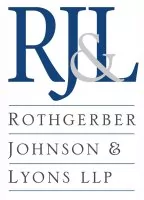In tight real estate markets, developers look for "marketing edges" that will spur sales. Such advantages often come in the form of recreational amenities, such as greenbelts, hiking and biking trails, parks, playgrounds, clubhouses, tennis courts, swimming pools, and even golf courses. Even though recreational features can spur sales and add value to a development, adding recreational amenities can be expensive.
But tax deductions can help. A little known tax break can reduce the after-tax costs of such amenities. Although amenities resemble capital assets that are typically recovered over time, the tax law offers a break. Under precise guidelines, real estate developers may add the "estimated" costs of these amenities to the tax basis of lots sold. In effect, the developer recovers a portion of the amenity cost with each lot sale.
This tax benefit is very different from depreciation and instead resembles the special rules for inventory costing. The tax benefit is achieved by increasing the tax basis of the lots. In other words, the original cost of the lots can be increased for certain expenditures known as "properly chargeable costs."
Are amenity costs properly chargeable costs? Can such amenity costs be added to basis of the lots in a particular development? Since 1992, the IRS has allowed developers to do just that. The IRS simply requires a developer follow detailed guidelines.
In order to fall within these favorable guidelines, the amenity must constitute a "common improvement." A common improvement is "any real property or improvements to real property that benefits two or more properties that are separately held for sale by a developer." In other words, the feature must serve as a benefit for multiple lots.
Some developers have broadly interpreted this benefit requirement. With a broad perspective, recreational facilities such as a golf course and clubhouse are deductible "common improvements." Although initially skeptical, the IRS may now allow these expensive amenities to qualify. In other words, if such amenities are properly structured, a golf course and related costs can be recovered when the associated lots are sold.
An expansive view of tax benefits has not gone unchallenged. During the last two years, the federal courts have issued two important cases.
Charlevoix Country Club
In 2000, the U.S. District Court reviewed the issue of allocation of common amenity costs. The developer argued that it should be able to increase the lot basis for all or a portion of its development and construction costs for a golf course and clubhouse. The court used a two-part test to decide the issue.
The court held that it would allow a common improvement characterization if: (1) the basic purpose of the taxpayer in constructing the common improvement is to induce lot sales and (2) the taxpayer did not retain too much ownership and control of the common improvement. The court reasoned that although the developer may have constructed the golf course and country club for the sole purpose of improving the salability of the residential lots, the developer violated the control test. In effect, the developer retained complete control over their future use of the golf course and clubhouse intending to operate it as a separate business. With this holding, the court found that the golf course and clubhouse were really an independent business from the residential lot sales. Thus, the developer was not allowed to allocate its development and construction costs to the basis of the residential lots.
The Valley Country Club
In 2001, the U.S. Tax Court reviewed somewhat similar facts, in that a real estate developer was using a golf course amenity to help sell residential lots. But in this latter case, the developer achieved a favorable outcome. In David C. Hutchinson, et al. v. Commissioner, a real estate developer, in calculating gain on the residential lots, increased the tax basis by the estimated construction costs relating to common improvements.
The developer purchased a real estate including residential lots for the development of a golf course, clubhouse, and necessary acreage for roads and common areas. As soon as construction was completed, the developer deeded the golf course and clubhouse property in escrow to a homeowner's association. But through the escrow arrangement, the developer continued not only to manage and operate the golf course and country club but also absorbed its operating losses. The escrow then released the deed and full legal title and operational authority to the golf course and country club property.
Factually, the developer released control and thus was able to increase lot basis. Charlevoix failed in its attempt to increase the tax basis. Charlevoix did not convince the court that the country club was only a by-product because it retained complete ownership of the country club and golf course. In effect, Charlevoix wanted to be in the golf course operations business in addition to developing platted lots. In order to succeed, developers should follow the Hutchinson structure, in which that developer transferred the ownership of the country club property to the contractor when the clubhouse was put into service.
Rothgerber Johnson & Lyons LLP regularly advises landowners and developers in all legal issues affecting real estate developments, including income tax planning. Our tax lawyers are specialists in federal and state income tax planning and the various techniques to secure tax benefits for real estate developments.
The content of this article is intended to provide a general guide to the subject matter. Specialist advice should be sought about your specific circumstances.


